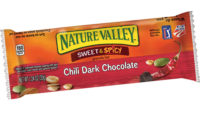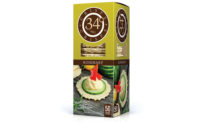With current food trends focusing on health-and-wellness, it may be tempting to dismiss the cookie category as out of touch or on its way out. And while most of the top companies operating in the cookie category have seen relatively flat sales activity—or, at best, modest gains—traditional cookies still account for a sizeable portion of this $8 billon category.
Overview | Bread | Tortillas | Sweet Goods | Snack Cakes | Pizza | Desserts | Cookies | Buns & Rolls | Bars | Breakfast Products
But, these days, cookies and better-for-you are not mutually exclusive. Considering the wide range of consumer perceptions related to better-for-you, encompassing product dynamics like allergen-free, grain diversity and non-GMO, there’s room for incremental growth in this area.
Market data
According to data from IRI, Chicago, cookies held their own for the 52 weeks ending April 17, 2016. Dollar sales rose 3.54 percent over the previous year, reaching $8.1 billion. The top company in cookies is Mondelēz International, owner of iconic Nabisco cookie brands like Oreo, Chips Ahoy!, Newtons, Nilla, and Nutter Butter—as well as the successful breakfast biscuit brand BelVita—most of which saw dollar sales growth over the past year:
- BelVita up 26.02 percent to $269.1 million
- Nutter Butter up 17.65 percent to $120.1 million
- Oreo up 8.55 percent to $816.4 million
- Golden Oreo up 5.31 percent to $123.9 million
- Oreo Double Stuf up 2.13 percent to $281.9 million
Chips Ahoy! Was down 0.11 percent in dollar sales, but accounted for a weighty $639.1 million in sales for the period.
Private label sits in the No. 2 slot, and was up 4.54 percent in dollar sales for the period to $1.15 billion, with growth pacing ahead of the category overall. Private label also saw some significant growth in frozen cookie dough, up 49.70 percent in dollar sales.
Looking back
Traditional cookies form the primary sales driver across cookies, but manufacturers have shown that they aren’t afraid of experimenting with better-for-you versions to round-out their portfolio. Breakfast cookies, or biscuits, have emerged as the primary vehicle for nutrition-focused cookie growth, with multiple manufacturers entering the segment over the past few years, including Mondelēz International, Kellogg Co., PepsiCo, Snyder’s-Lance, General Mills and Post Foods, along with private label retail lines:
- Mondelēz International—Nabisco belVita Bites
- Kellogg Nutri-Grain Breakfast Biscuits
- PepsiCo—Quaker Breakfast Cookies
- Snyder’s-Lance—Lance Quick Starts
- General Mills—Nature Valley Breakfast Biscuits
- Post Honey Bunches of Oats Breakfast Biscuits
- CVS Gold Emblem Abound Crunchy Oat Breakfast Biscuits
Flowers Foods also launched 7 Grain Creme Cookies under its Mrs. Freshley’s brand last year, a product that provides 5 grams of whole grains per serving.
“Cookies have traditionally been a food of indulgence, but have more recently entered into the conversation about delicious foods that align with consumers’ concepts of what makes a food a better or healthier option,” says Angie Singer, director of sales and marketing, Delavau Food Partners, Philadelphia. “For some, this means seeking snacks and treats they enjoy, but also deliver added nutrients; for others, clean-label foods are perceived as ‘better’ or ‘healthier.’”
Mel Festejo, chief operating officer, American Key Food Products, Closter, NJ, has noticed the demand for healthier cookies taking various shapes, from swapping artificial ingredients for natural ones to passing up genetically modified ingredients in favor of non-GMO offerings. “Traditional sweeteners—sugars and high-fructose corn syrup—are giving way to low-glycemic and low-calorie sweeteners,” he adds. “Ingredients rich in fibers and nutrients are now in the ingredient labels of a growing number of food products.”
According to Festejo, this has a lot to do with millennials, who are driving a better-for-you shift in buying practices, and also with the increasing incidence of food allergies and intolerances. “It is no longer rare to see children who are restricted to gluten-free, dairy-free and egg-free diets,” he says. “This ‘free-from’ community is one of the most discriminating market subgroups that is highly sensitized to, and aware of, food issues that will adversely affect the experiences of its members.” And, he adds, whether it’s because of social media or support groups, word gets around and informs purchasing habits.
American Key Food Products focuses on non-GMO, gluten-free, grain-free and clean-label ingredients for cookies—a shift that’s been taking place for the company since 2011, Festejo says. Among its offerings is a proprietary flour made from cassava roots, which is suited to gluten-free baking.
Additionally, the company plans to soon offer a premium rice flour based on a “proprietary design and production process that makes it outperform all other rice flours in gluten-free baking applications,” says Festejo. Native pea starch is also on the company’s radar.
“Consumers now expect more out of their cookies—they’re not just an indulgence anymore,” says Singer, who credits social media and news outlets with influencing consumer trends, in addition to shoppers’ increased access to, and awareness of, food and ingredient information. “Another factor driving this trend is that, with increasing employment, people have less time to prepare meals at home and rely on on-the-go options like cookies and other snacks to supplement or replace traditional meals.”
Delavau’s Accent calcium fortification technology can increase the calcium content in a cookie, so that it essentially offers as much calcium as a glass of milk, explains Singer. The company can also incorporate calcium into a chocolate inclusion, like a chocolate chip, or compound coating. “From a sensory perspective, the calcium is undetectable, so consumers can enjoy the experience they expect from their favorite cookie,” she adds, “while appreciating the ‘good source’ or ‘excellent source’ of calcium it can deliver.”
The other trend Singer notices as emerging in the category is that health-conscious consumers may not reach for these treats as often as they used to. “At the end of the day, people love cookies, and they’re still going to eat them,” she says. “The difference is that they might not eat as many or as often.” To help preserve freshness, Delavau offers Encore freshness technology, which ensures that cookies can sit on the shelf—at the store or in the home pantry—a bit longer and still taste fresh.
Looking forward
Opportunities for future growth in the cookies category go beyond “better-for-you.” The real winners will offer clean labels and nutrients, but also a little something extra like unique flavors or nontraditional ingredients, says Festejo. “Most of the innovations in flavors come from the use of new, exotic ingredients that are derived from nontraditional plants or crops, be they seeds, nuts, fruits or extracts from these plants,” he explains, adding that, more often than not, these ingredients come from other regions of the world.
“The sourcing for these newly commercialized ingredients from foreign countries is becoming more challenging given the new regulatory environment’s emphasis on food safety, especially for imported food products,” says Festejo. “The difficulty is that, in most places where these novel ingredients are sourced from, farming, processing and/or manufacturing practices are not up to current food quality and safety standards.” Increasing safety standards will also become more important, he adds, as more manufacturers become mindful of allergens.
The good news is that cookie consumers, in particular, are open to new flavors and varieties, says Singer. “Whether they’re free from gluten or other allergens, or have a moist, cakelike texture to complement a red velvet cake-inspired flavor, the possibilities for the cookie category are virtually endless,” she says. “If you can provide the market with a clean-label product with health benefits and a great taste, you’re likely to pique the interest of today’s consumer.”
Optimizing cookie dough production
Select segments of frozen cookie dough had a banner year, according to data from IRI, Chicago, clocking in at $18.85 million in sales for the 52 weeks ending April 17, 2016. According to Linde LLC, Bridgewater, NJ, cryogenic freezing is transforming the category and production line.
The challenge is that raw cookie dough can be difficult to smoothly process once the dough is made, whether it’s slicing, stacking or forming. In order to streamline this process, new cryogenic offerings can fully freeze or crust freeze cookie dough, which can speed production and packaging operations. According to Linde, in-line cryogenic processing with liquid carbon dioxide or liquid nitrogen can offer significant advantages in speed, space and efficiency over other chilling or freezing methods.
Crust freezing makes sense for sliced or formed cookie dough packed in boxes, since it can improve stackability to speed processing and increase production. The Linde Impingement Freezer uses a proprietary process suitable for crust freezing raw-formed cookies at high volume, and can produce three to five times the capacity of a conventional cryogenic or ammonia-based tunnel freezer in the same linear space.
Fully freezing the dough is another option, especially for production plants with limited storage capacity in their blast freezers; freezing the product fully allows manufacturers to preserve product quality and increase or eliminate freezer storage time prior to shipment.
Overview | Bread | Tortillas | Sweet Goods | Snack Cakes | Pizza | Desserts | Cookies | Buns & Rolls | Bars | Breakfast Products










